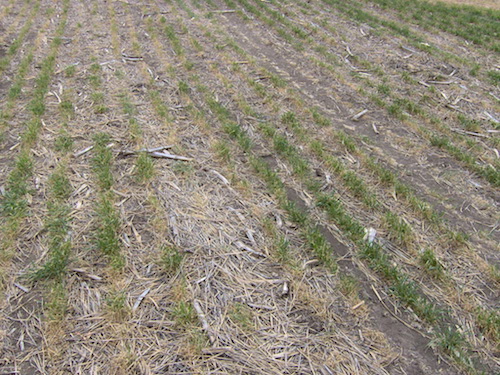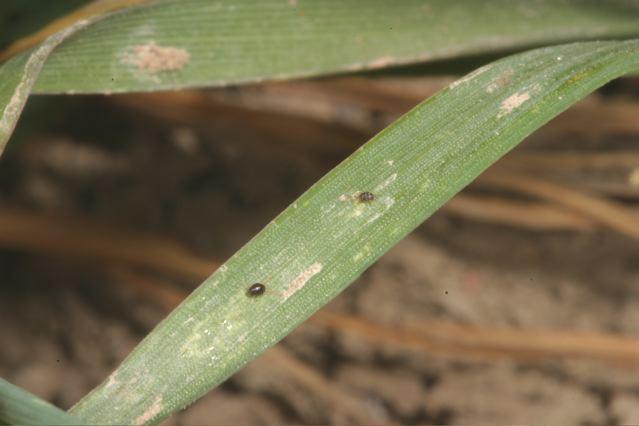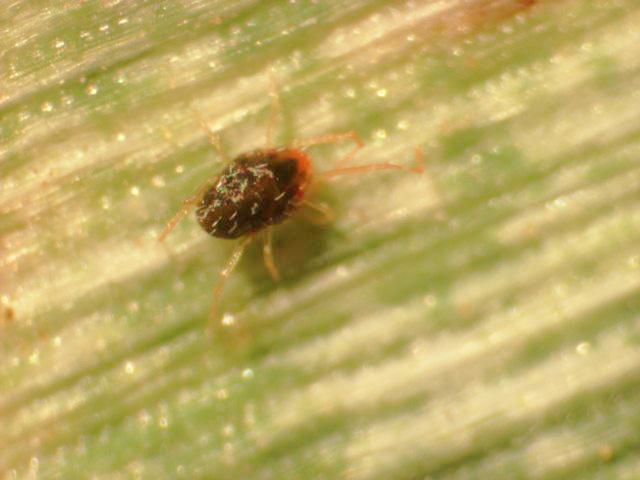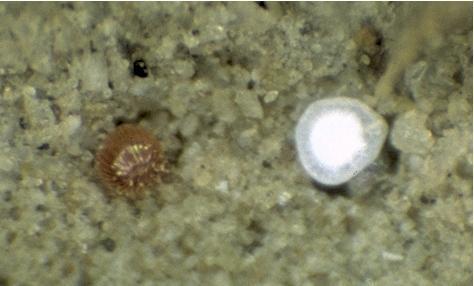Brown wheat mites pass the summer as diapausing (resting) white eggs in the soil. These eggs hatch in the fall as temperatures and moisture conditions become more favorable. The life cycle is short, and brown wheat mites can produce multiple generations over the winter, as environmental conditions permit. One or two generations can develop in the fall and another two or three generations in the spring. Brown wheat mite activity is highest in late fall and early spring, with populations usually peaking around mid-April. Outbreak potential is high because all adults are female, and each can produce 70 to 90 winter eggs in a three-week period, before later generation females begin laying the small, white, oversummering eggs. The mites feed mostly during the daytime, with activity on the plants reaching a peak about mid-afternoon. Unlike many other mites, they do not produce webbing. When disturbed, they run rapidly over leaf surfaces and drop to the ground. At night they crawl down into the soil. They can easily survive cold temperatures in the soil, but their populations can be dramatically reduced by a beating rain. The brown wheat mite has been most problematic during drought cycles in western Kansas. Even irrigated fields can be affected, although problems are typically more serious in dryland production. Although it is a perennial presence in wheat, damaging populations tend to occur where wheat is grown continuously, or where volunteer wheat was allowed to grow on summer fallow ground, as these conditions provide an uninterrupted food supply from year to year, facilitating population increase.



